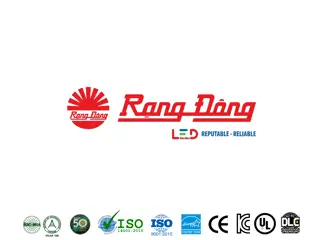Exploring Relationships with Bar Models in Math Lessons
Dive into a series of math lessons introducing augmentation, aggregation, and bar models to help children understand part-part-whole relationships. Utilize concrete tools like Cuisenaire rods to explore concepts and encourage problem-solving. Engage students in hands-on activities and discussions to deepen their understanding of mathematical relationships in a fun and interactive way.
Download Presentation

Please find below an Image/Link to download the presentation.
The content on the website is provided AS IS for your information and personal use only. It may not be sold, licensed, or shared on other websites without obtaining consent from the author. Download presentation by click this link. If you encounter any issues during the download, it is possible that the publisher has removed the file from their server.
E N D
Presentation Transcript
Spine 1.28 A2 Week 1 Teaching notes Lesson 1 Augmentation the sequential increase to the whole (opposite is reduction) Lesson 2 Aggregation all parts together not in a sequence (opposite is partition) Lesson 3 Multiplicative and additive mixed The bar model is the representation we are using for part part whole (this may have any number of parts but we still call it part part whole) Cusinaire is a concrete version of the bar model. Can also use strips of paper. When drawn the bar model serves as a jotting or a diagram there is not a fixed way that is right (eg whole can be above or below parts) and do not get children attempting to draw parts proportionally to their size. These lessons are about children exploring relationships between parts and a whole. This will help our children to understand worded questions. The numbers are deliberately easy as we are teaching relationships not algorithms at this stage.
Find the dark green rod. What other rods can you use to make the same length as the green rod? Explore lots of options within the class Stem sentence: The whole is d, .. is a part, is a part, .. is a part and the w The whole is d and g is a part, w is a part, r is a part Did you find these rods? Green, white and red together are the same length as dark green How could we write this as an equation? g + w + r = d d = w + r + g
Lesson 1 Augmentation First, then , then now I am going to tell you a story that the bar model could represent Mrs Lloyd Davies went to the shops. First she bought an apple, next a drink and lastly a book Which bar represents which item? What do you think the different lengths are being used to represent? Could they represent anything else? Money, weight, volume? What does d represent if g, w and r are the cost of the apple, drink and book?
Lesson 1 Augmentation First, then , then now Use your whiteboard to draw the bar model as I tell you the story again Now show a bar to represent how much the apple, drink and book cost altogether Now I am going to tell you how much each item cost Apple 50p drink 2.50 book 1.50 How much did they cost altogether?
Lesson 1 Augmentation First, then , then now Use your whiteboard to draw this story I went to the shops. First I bought apples for 1.95, then I bought a drink for 3.50, finally I bought a book for 5.05 Now how much did I spend at the shops? 1.95 + 3.50 + 5.05 = What methods can you use to add these amounts together? Think efficient and accurate
Independent Practice Match this bar model with a story Make up a story of your own about the cost of your shopping Write down each item that you bought in the order that you bought them Then fill in the prices and calculate the total cost of your shopping Item 1 ..cost .. then Item 2 . cost ... then Item 3 ..cost . Now Total cost ..
Lesson 2 Aggregation Hook
Lesson 2 Aggregation Hook continued Stem sentence: 60 is a part, 59 is a part, 60 is a part and the whole is ..
Lesson 2 Aggregation Make up different stories that this structure could be representing - Animals - -Money - Distances
Lesson 2 Aggregation We do: Draw a bar model to represent this
Lesson 2 Aggregation What is the same and what is different about these two models?
Lesson 2 Aggregation Tell a story using - kg - m - km
Independent Practice 1) Ben runs 3 km on Monday, 200m on Tuesday and 1.5 km on Wednesday. How far has he run in total? 2) Amy watches TV program A for 45 mins, program B for 1 hour , program C for 1 hours. How long does she watch for? 3) Doug spends 39p on sweets, 1.50 on a comic and 80p on a drink. How much has he spent? Challenge Sam and Tom have 67 80 between them. If Sam has 6 20 more than Tom, how much does Tom have?
Day 3 Teaching notes This lesson will help children to understand problems that include addition/subtraction as well as multiplication. The numbers are easy so children can focus on relationships and use the bar model to expose the structure of these questions before we more onto questions with missing parts next week. We will need to teach and make sure children have procedural fluency with written methods in a different lesson.
repeate d addition Day 3 multiplicative and additive combined Can you find 3 identical rods that are the same length as one rod of a different colour The whole is d, there are 3 equal parts each of which are r r + r + r = d and also 3r = d This can be called additive (repeated) or multiplicative
Day 3 multiplicative and additive combined We do Miss Lownsbrough has a bag of 100 sweets after trick or treating. She eats 20 and feels a bit ill. So she decides to share the rest between her 4 siblings. How many sweets do they each get?
Day 3 multiplicative and additive combined You do Miss Young earns 58 for coaching lacrosse. She spends 10 on a new whistle. Then she buys 6 new lacrosse balls. How much does each ball cost? Use a bar model to represent your equation.
Day 3 multiplicative and additive combined 1L = ______ml 5L = ______ml 1.5L = ______ml
Day 3 multiplicative and additive combined You do Miss Young takes 2 jugs each containing 3 litres of water. She pours herself a 600ml glass of water. Then she shares the rest between 6 children. How much does each child get?
MPI using a bar model to solve additive and multiplicative word problems Draw a bar model to represent each worded problem and calculate the answers Q1. Ms Kinnear gets 85 for her birthday. She spent 30 on Freddie Fox. She spent the remaining money on 5 pumpkins for Halloween. How much did each pumpkin cost? Show using a bar model. Q2. Ms Lownsbrough trains for a marathon. She needs to run 26 miles each week. On Monday she ran 5 miles. She ran an equal distance on the following three runs. How far were they? Q3. Miss Young buys 3 bags of coffee and a croissant. She spends 6.00 in total. The croissant costs 0.75. How much did each bag of coffee cost? CHALLENGE Write your own multiplicative story and represent it using a bar model.























